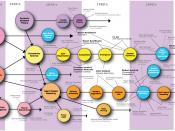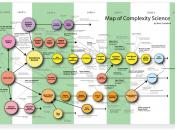Introduction
Strategy theories can be applied uncritically to the management of quality. Opposing strategy paradigms are used as the basis of ideologically polar views with little consideration of any alternative points of view (see for example: Firat, 1985; Shrivastava, 1986; Venkatesh, 1985). Using an ideological approach to strategy that may not be appropriate for the environmental conditions in which a company operates can lead to company failure (e.g. Barr, Stimpert, & Huff, 1992).
The historical reasons for ideologically polar views of strategy are embedded in the types of debate that emerged out of the early strategic management literature. For example, a major early debate was developed by writers advancing one or another opposing strategy school of thought. One school advanced various forms of determinism, whereas the opposing school advanced various forms of rational choice (Bourgeois, 1984). This debate had the effect of polarising the strategy schools of thought into the domain of ideology by considering environmental determinism and rational choice to be mutually exclusive (Hrebiniak & Joyce, 1985; Lawless & Finch, 1989).
There have been calls to address the limitations of these ideological views of strategy to provide more comprehensive explanations of management practice (Bourgeois, 1984; Ginsberg, 1984; Jemison, 1981). Comprehensive explanations are required to deal with complexity, such as those experienced in the management of relational services in technological arenas dealing with intensely competitive changing environments (Evans, 1991). These environments are becoming more dominant due to increasing competition in a global information economy, and increasing competition in services promises to be a significant trend (Senge, 1990).
An integrational approach using different strategy paradigms has been suggested as a way forward to provide more comprehensive explanations to deal with such issues (Bailey & Johnson, 1992; Combe, 1999; Cravens, Greenley, Piercy & Slater, 1997; Hart, 1992; Hrebiniak & Joyce, 1985; Jemison,


